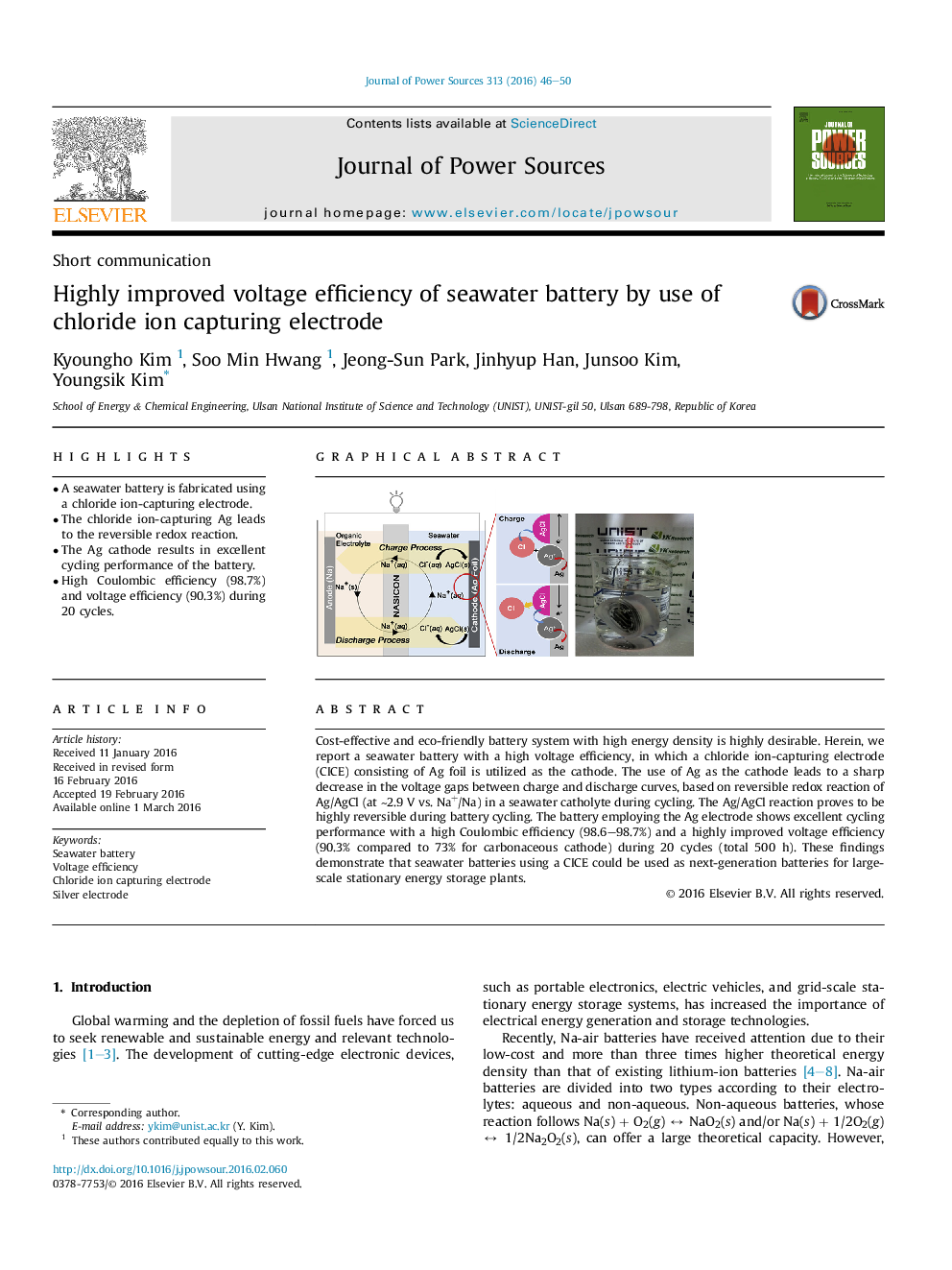| Article ID | Journal | Published Year | Pages | File Type |
|---|---|---|---|---|
| 1286259 | Journal of Power Sources | 2016 | 5 Pages |
•A seawater battery is fabricated using a chloride ion-capturing electrode.•The chloride ion-capturing Ag leads to the reversible redox reaction.•The Ag cathode results in excellent cycling performance of the battery.•High Coulombic efficiency (98.7%) and voltage efficiency (90.3%) during 20 cycles.
Cost-effective and eco-friendly battery system with high energy density is highly desirable. Herein, we report a seawater battery with a high voltage efficiency, in which a chloride ion-capturing electrode (CICE) consisting of Ag foil is utilized as the cathode. The use of Ag as the cathode leads to a sharp decrease in the voltage gaps between charge and discharge curves, based on reversible redox reaction of Ag/AgCl (at ∼2.9 V vs. Na+/Na) in a seawater catholyte during cycling. The Ag/AgCl reaction proves to be highly reversible during battery cycling. The battery employing the Ag electrode shows excellent cycling performance with a high Coulombic efficiency (98.6–98.7%) and a highly improved voltage efficiency (90.3% compared to 73% for carbonaceous cathode) during 20 cycles (total 500 h). These findings demonstrate that seawater batteries using a CICE could be used as next-generation batteries for large-scale stationary energy storage plants.
Graphical abstractFigure optionsDownload full-size imageDownload as PowerPoint slide
